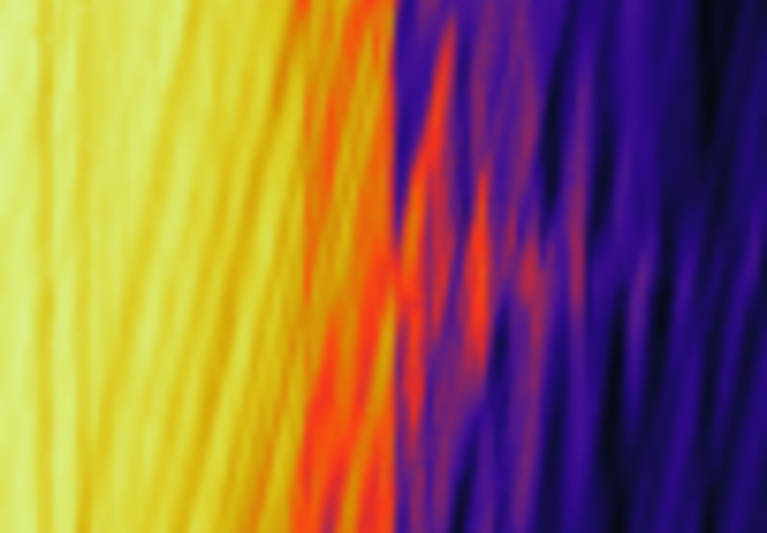
Tramea lock-in modules
High-performance digital lock-in amplifiers
The lock-in modules let you modulate and demodulate any of the input and output signals available with frequencies up to 40 kHz. Up to 8 lock-in modules can be used independently from each other or synchronized in a phase coherent manner when the generation of multiple frequencies is required. With the multi-frequency option a single module can demodulate up to 8 harmonics of the same signal or independent input signals. The advantage of an internal lock-in detector over an external device is
- Higher resolution and dynamic range
- Multifrequency and multi-input operation
- Over 120 dB linearity
- Over 100 dB dynamic reserve
- No need for gain and attenuation switching
- Steeper filters (up to 8. order)
- Up to 8 lock-ins, which can also be synchronized for phase-coherent operation
- Lock-in can be synchronized with OC4. Measure STM current at the exact oscillation frequency of the probe
- Synchronization with data acquisition when using Sync filtering
- Integration avoids errors due to insufficient settling time with slow filter responses
- no additional noise source through external cabling
- no potential grounding problems
- Tandem-demodulation is straightforward to configure
- flexible and simple setup
- Guided filter set-up utility
- Ability to turn on and off the excitation through software during the experiment
- Ability to turn on and off the excitation for different bias ranges through software during the experiment
Applications range from regular transport measurements to multi-terminal Hall measurements, multifrequency measurements, simultaneous data acquisition with different time constants, dI/dV, inelastic electron tunneling spectroscopy (IETS), measurements of open and closed loop transfer functions and every type of phase sensitive measurements.
The lock-in filter array is also available for signals unrelated to lock-in measurements. The filters in the array are freely assignable, meaning that it is possible to use a subset of the filters for lock-in measurements and the remaining filters for generic purposes.
All lock-in modules also feature a sync output option. In addition to the main signal output, the lock-in module can generate a synchronization signal with the same frequency as the main signal. The amplitude can be configured independently from that of the main signal, and it is also possible to use harmonics of the main signal frequency as a sync signal. The sync signal is used to synchronize external instruments (for example other lock-ins, optical choppers,…) with the frequency of the internal lock-in. The output connector for the sync signal is user-selectable.
KEY FEATURES
- Modulates any signal up to 40kHz
- Demodulates any signal up to 100 kHz (R, phi and X, Y)
- Up to 8 independent modules, synchronizable
- Lock-in Modules can be synchronized to OC4 for acquiring signals at the oscillation frequency
- Advanced signal filtering
- Record transfer functions (bode plots)
- Tandem-demodulation possible
Lock-in packages
| Type | Designation | Part number | Number of frequency generators | Number of dual-phase demodulators |
| Single lock-in | LD5-1 | 2100002230 | 1 | 2 |
| Dual lock-in | LD5-2 | 2100005467 | 2 | 4 |
| Quad lock-in | LD5-4 | 2100005852 | 4 | 8 |
| Octa lock-in | LD5-8 | 2100005853 | 8 | 8 |
| Multi-demodulator option for LD5-1 and LD5-2 | LD5-MF | 2100005854 | Same as LD5-1 or LD5-2 | 8 |
Lock-in upgrade packages
| Type | Designation | Part number | Number of frequency generators | Number of dual-phase demodulators |
Upgrade from LD5-1 to LD5-2 | LD5UG1-2 | 2100005855 | 1 → 2 | 2 → 4 |
Upgrade from LD5-1 to LD5-4 | LD5UG1-4 | 2100005856 | 1 → 4 | 2 → 8 |
Upgrade from LD5-1 to LD5-8 | LD5UG1-8 | 2100005857 | 1 → 8 | 2 → 8 |
Upgrade from LD5-2 to LD5-4 | LD5UG2-4 | 2100005858 | 2 → 4 | 4 → 8 |
Upgrade from LD5-2 to LD5-8 | LD5UG2-8 | 2100005859 | 2 → 8 | 4 → 8 |
Upgrade from LD5-4 to LD5-8 | LD5UG4-8 | 2100005860 | 4 → 8 | 8 → 8 |
Upgrade from LD5-1 with LD5-MF option to LD5-2MF | LD5UG1MF-2MF | 2100005861 | 1 → 2 | 8 → 8 |
Upgrade from LD5-1 with LD5-MF option to LD5-4 (includes LD5-MF option) | LD5UG1MF-4 | 2100005862 | 1 → 4 | 8 → 8 |
Upgrade from LD5-1 with LD5-MF option to LD5-8 (includes LD5-MF option) | LD5UG1MF-8 | 2100005863 | 1 → 8 | 8 → 8 |
Upgrade from LD5-2 with LD5-MF option to LD5-4 (includes LD5-MF option) | LD5UG2MF-4 | 2100005864 | 2 → 4 | 8 → 8 |
| Upgrade from LD5-2 with LD5-MF option to LD5-4 (includes LD5-MF option) | LD5UG2MF-8 | 2100005865 | 2 → 8 | 8 → 8 |
SPECIFICATIONS
| Number of Frequency generators | 1, 2, 4 or 8 |
| Number of Demodulators | 1, 2, 4 or 8 dual-phase demodulators assignable to any carrier |
| Modulation Frequency Range | 100 mHz - 40 kHz |
| Demodulation Frequency Range | 100 mHz - 100 kHz |
| Frequency Resolution | 10 nHz |
| Phase Resolution | 22 fRad |
| Demodulator Harmonic | 1 - 32 |
| Demodulator Filter Cut-Off Frequency | 100 mHz - 20 kHz (corresponds to time constants between 18 s and 8 μs) |
| Demodulator Filter Slope | 6, 12, 18, 24, 30, 36, 42, 48 dB/oct |
| Demodulator Output Resolution | 32-bit |
| Demodulator Output Data Rate | 1 MS/s |
| Sync Filter Frequency Range | 100 mHz - 40 kHz |
| Linearity | 120 dB |
| Dynamic Reserve | >100 dB |
| Reference | Any internal frequency generator or OC4 |
| Demodulator Settings | Independent for each demodulator |












